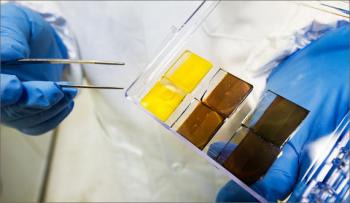Flipping a chemical switch may result in more stable perovskite solar cells
Researchers from Brown University, the National Renewable Energy Laboratory (NREL) and the Chinese Academy of Sciences' Qingdao Institute of Bioenergy and Bioprocess Technology came up with a way of "flipping a chemical switch" that converts one type of perovskite into another - a type that has better thermal stability and is a better light absorber. This achievement could be one more step toward bringing perovskite solar cells to the mass market.

The researchers demonstrated their new technique for making solar cells that can be more stable at moderate temperatures than the perovskite solar cells that are currently being developed; The technique is said to be simple and has the potential to be scaled up.




